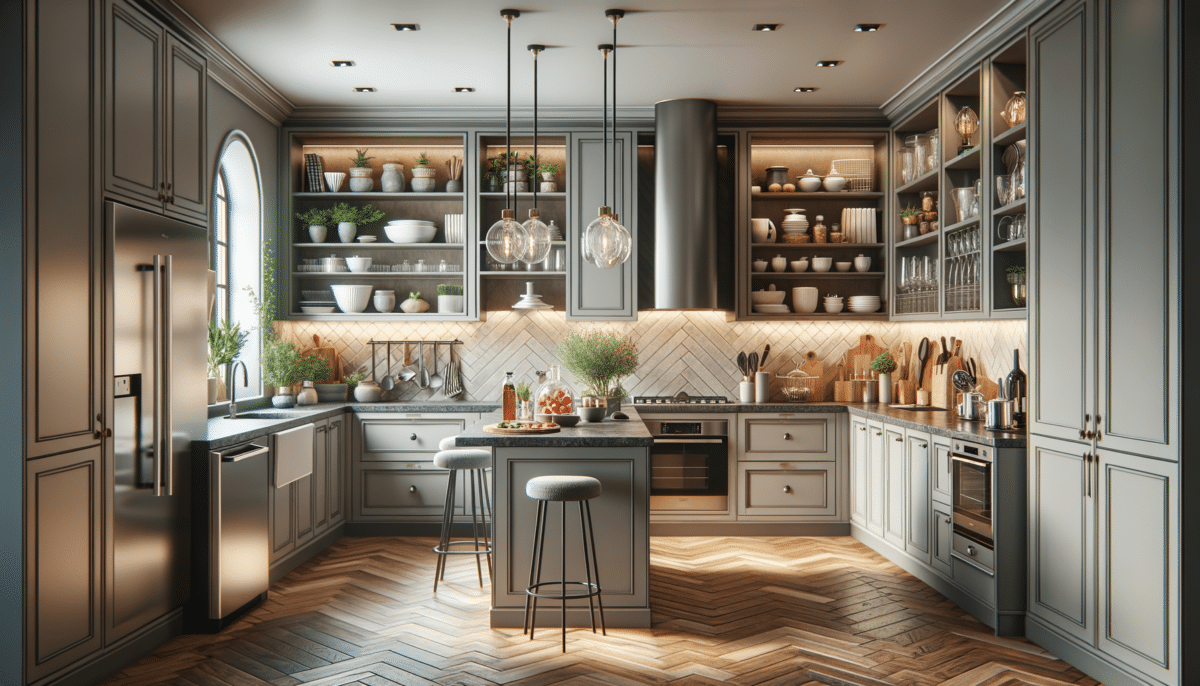The Importance of Kitchen Design
Kitchen design plays a pivotal role in the overall functionality and aesthetics of a home. As the kitchen is often considered the heart of the home, its design must cater to both practical needs and personal tastes. A well-designed kitchen can enhance the cooking experience, improve efficiency, and even increase the value of a property. In today’s fast-paced world, the kitchen is not just a place for preparing meals; it’s a space for socializing, working, and relaxing. Therefore, a thoughtful design that accommodates various activities is essential.
Data from real estate experts suggest that a modern, well-equipped kitchen can significantly boost a home’s market appeal. Buyers often prioritize kitchens when looking for a new home, and a stylish, functional design can make a lasting impression. Moreover, a well-planned kitchen layout can optimize workflow, making cooking and cleaning more efficient. By considering elements such as the kitchen triangle, which involves the placement of the sink, stove, and refrigerator, homeowners can create a space that supports seamless movement and interaction.
Essential Elements of Kitchen Design
When it comes to kitchen design, several key elements must be considered to create a harmonious and efficient space. These elements include layout, cabinetry, countertops, appliances, lighting, and color schemes. Each component plays a vital role in the overall design and functionality of the kitchen.
The layout is the foundation of any kitchen design. Common layouts include the U-shape, L-shape, galley, and open-plan designs. Each has its advantages, depending on the available space and the homeowner’s needs. For instance, a U-shaped kitchen provides ample counter space and storage, while an open-plan design promotes social interaction and connectivity with other living areas.
Cabinetry and countertops are critical for both storage and aesthetics. Choosing the right materials and finishes can transform the kitchen’s look and feel. Options range from traditional wood finishes to sleek, modern materials like stainless steel or glass. Countertops should be durable and easy to maintain, with popular choices including granite, quartz, and laminate.
Incorporating Technology into Kitchen Design
Incorporating technology into kitchen design is becoming increasingly popular as homeowners seek to enhance convenience and efficiency. Smart appliances, such as refrigerators with touch screens and ovens with remote control capabilities, are transforming the way we interact with our kitchens. These innovations not only make cooking and food storage more efficient but also add a modern touch to the kitchen’s overall design.
Another technological advancement in kitchen design is the integration of smart lighting systems. These systems allow homeowners to adjust lighting levels and colors to suit different moods and activities. For example, bright, focused lighting is ideal for cooking, while softer lighting creates a cozy atmosphere for dining or relaxing.
Moreover, technology can be seamlessly integrated into cabinetry and countertops. Built-in charging stations, for instance, provide convenient access to power for devices, while under-cabinet lighting enhances visibility and adds a sophisticated touch. By embracing technology, homeowners can create a kitchen that is not only functional but also future-proof.
Sustainable Kitchen Design Practices
Sustainability is a growing consideration in kitchen design as more homeowners seek to reduce their environmental impact. Sustainable practices can be incorporated into various aspects of kitchen design, from the materials used to energy-efficient appliances and waste reduction strategies.
Choosing eco-friendly materials for cabinetry and countertops is a great starting point. Bamboo, reclaimed wood, and recycled glass are popular choices that offer durability and a reduced environmental footprint. Additionally, energy-efficient appliances, such as refrigerators and dishwashers with high Energy Star ratings, can significantly reduce energy consumption and utility bills.
Implementing waste reduction strategies, like composting and recycling, is another way to promote sustainability in the kitchen. Installing a dedicated recycling center or compost bin can make it easier for homeowners to manage waste responsibly. By prioritizing sustainability, homeowners can create a kitchen that is both environmentally friendly and cost-effective in the long run.
Personalizing Your Kitchen Space
Personalizing your kitchen space is essential to creating an environment that reflects your style and meets your needs. Whether you prefer a minimalist aesthetic or a vibrant, eclectic design, there are numerous ways to infuse personality into your kitchen.
Color schemes are a powerful tool for personalization. Neutral tones can create a calm, timeless look, while bold colors add energy and character. Incorporating personal touches, such as artwork, decorative tiles, or unique hardware, can further enhance the kitchen’s individuality.
Functionality should also be tailored to your lifestyle. If you love to cook, investing in high-quality cookware and ample storage is crucial. For those who enjoy entertaining, a spacious island or bar area can facilitate social gatherings. By considering your preferences and habits, you can design a kitchen that is both beautiful and practical.
